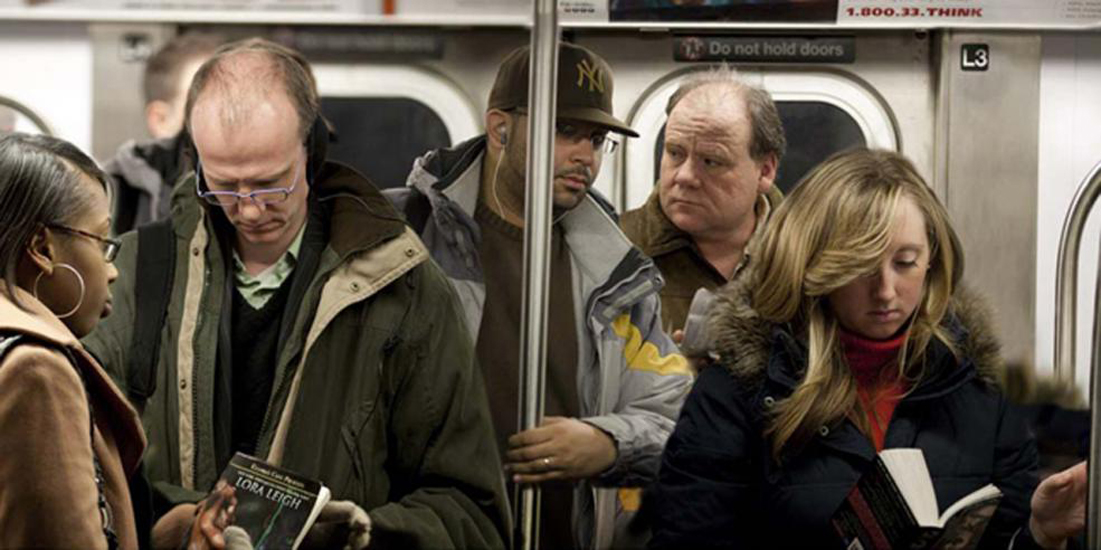
Julie Saul Gallery 535 West 22nd Street NY 10011 New York États-Unis
The dynamic urban environment and its occupants are the common thread in this three-person show comprised of high-tech digitally composed photographs and videos. Each artist has utilized new technologies as well as commercially available equipment to fabricate his compositions in unconventional ways. The emotional range is wide-‑from cool observation to an instinctive experience of individuals and architecture pressing in on the viewer.
In Dutch photographer Reinier Gerritsen’s portraits at the Wall Street subway stop in New York City, the compression of the bodies and expressions of the individuals emphasize the diverse humanity we experience on mass transit. He photographs with a burst of exposures, as used in sports photography, capturing many images in rapid succession. Next, he uses Photoshop to re-combine the figures, selecting each individual’s expression and gesture to create the most layered story. The finished images often express introspection maintained in a public environment. Gerritsen has continued this group portrait project in a tightly themed series of people reading on the subway entitled The Last Book, which will be published by Aperture in fall of 2014.
Hungarian artist Adam Magyar creates photographs and videos in large cities around the world. Shown here are still images from the Squares series in which Magyar digitally combines aerial portraits of individuals who in reality were never in the same place, creating dynamic patterns of commuters against anonymous brick backgrounds. He compares the process to collecting and pinning down bug specimens. We will also show a black and white video from the Stainless series shot in Shinjuku (Tokyo). Shooting from inside a moving subway car, Magyar records unaware commuters on the platform as the train pulls into the station. Using an industrial video camera capable of shooting at a very high frame rate, Magyar captures what the naked eye cannot detect. Fixed objects pan past while the commuters appear almost frozen in super-slow motion. The playback is 56 times slower than reality, turning a 12-second familiar blur into a 12-minute film of beauty.
Swedish digital artist David Molander’s mission is the pursuit of the essence of urban centers. While on a residency at Location One in New York in 2012, he completed a body of work called Urban Zoom later shown at the Storefront for Art and Architecture, NY last summer. In video and still images, he depicts the dark energy of downtown New York in a series of moody, lurid and fragmented images that bend and warp architecture, people, and time. Using photo-editing software, he combines digitally captured images together with M.C. Escher-like complexity, weaving roads and bridges together with buildings to make impossible compositions.
Communicating a visceral experience of urbanity, lived and observed, these three European artists explore the limitations of human sensory perception, depicting the terrors and splendors of a brave new world.

